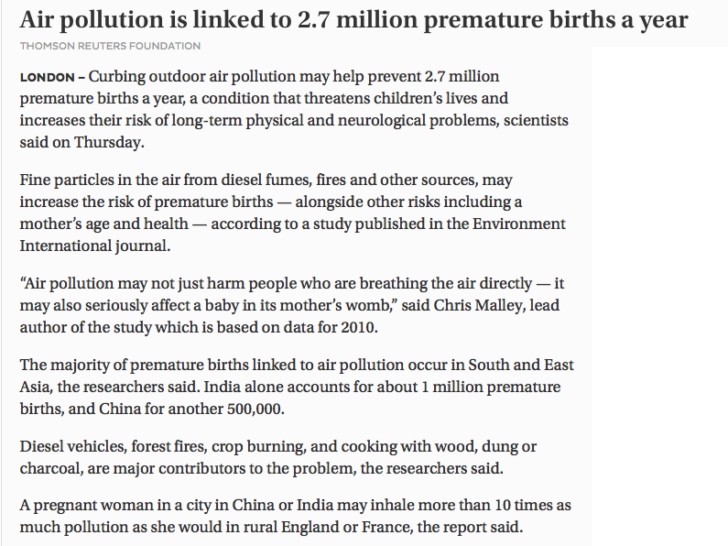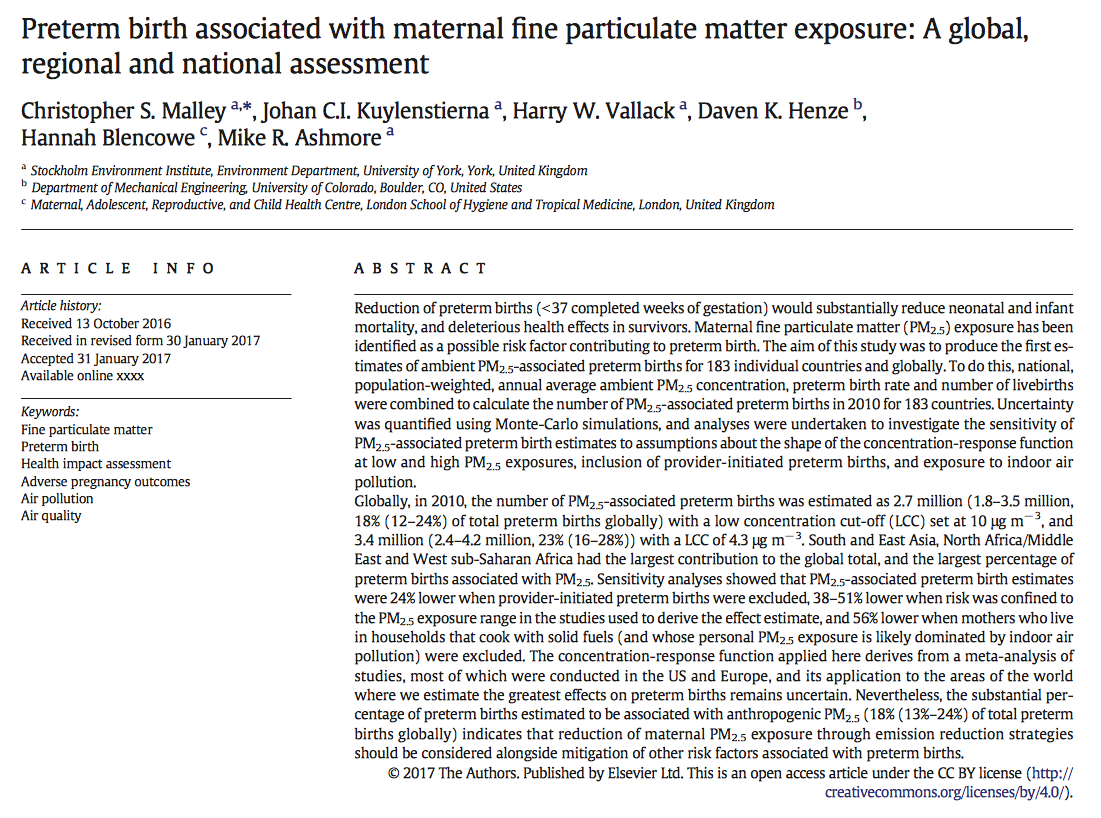Like shooting fish in a barrel. A new study claims about 1-in-5 preterm births is caused by PM2.5. My analysis shows that not one preterm birth, let alone 1-in-5, can be credibly linked with PM2.5.

Here’s the basic claim as reported in the media:
Here is the underlying study (“Malley”) and abstract (below):
As indicated below, the Malley study claim depends on a meta-analysis done by Sun et al. in 2015.

So it is to the Sun study that we now turn.
The Sun study took 18 extant studies on PM2.5 and preterm birth and put them into the ever-dubious statistical blender known as a meta-analysis. The reason for doing this is to manufacture one more statistically powerful study from 18 less statistically powerful studies. While meta-analysis may be intuitively appealing, it is usually inappropriate in epidemiology. Epidemiology studies tend to vary in data and methodology such that combining them is like combining apples and oranges. The result is usually a lemon.
First let’s take a quick gander at the 18 individual studies and see what they say. Here are the 18 studies as described in Sun:
Here is a quick take on each:
- Wilhelm. Admitted PM2.5 data of too poor quality to render meaningful results.
- Huynh. Exposure assumptions based on county-level air monitoring — so no idea what personal PM2.5 exposures were. The resultant relative risk estimate of 1.17 95% CI (1.08 – 1.28) is weak and unreliable.
- Jalaludin. Study concluded that air pollutants were helpful, NOT harmful.

- Ritz. Exposure assumptions based on closest air monitor — so no idea what actual PM2.5 exposures were. Crude analysis showed no association between PM2.5 exposure and birth. Weak association developed after magical statistical adjustments.
- Brauer. PM2.5 results statistically insignificant.
- Wu. Very weak associations built without individual exposure data.
- Gehring. Results not statistically significant.
- Rudra. Results not statistically significant.
- Kloog. No association for last trimester.
- Lee. Very weak associations based on estimated first trimester (only) exposures.
- Chang. The study is statistically non-significant.
- Fleischer. Study speaks for itself.

- Nannam. No association reported.
- Ha. Exceedingly weak associations based on modeled exposure data.
- Hyder. No association.
- Gray. No association.
- Pereira. Study speaks for itself.

- Pereira. Let the study speak for itself.

So NONE of the studies on which Malley’s study depends credibly or even at all link PM2.5 with preterm birth.



“I do not believe in the collective wisdom of
individual ignorance.” – Thomas Carlyle
‘South and East Asia, North Africa/Middle East and West sub-Saharan Africa had the largest contribution to the global total, and the largest percentage of
preterm births associated with PM2.5.’
Hmmm . . . might something else be different about Asia and Africa?
‘indicates that reduction of maternal PM 2.5 exposure through emission reduction strategies should be considered’
In Asia and Africa? I sense neocolonialism.
Have these “scientists” ever taken a course in “Scientific Method?”
It’s not surprising that this study cocks up the field of science. One look at the abstract and you can tell how reliable it would be:
No cause-and-effect basis at all. Simply take three random unrelated figures and statistically stitch them together to arrive at your desired conclusion. It’s unfortunate that most people on the planet are too stupid to realize this is fraudulent reporting (as it’s not even science-based, just statistical junk).
Where is the data from China? All of the studies were done in Australia and the USA. If you want to test pm2.5 go to China where on a really good windy day you might see the sun, otherwise it is a fog of pollution.